Accepted Scientific Name: Echidnopsis cereiformis Hook.f.
Bot. Mag. 97: t. 5930. 1871
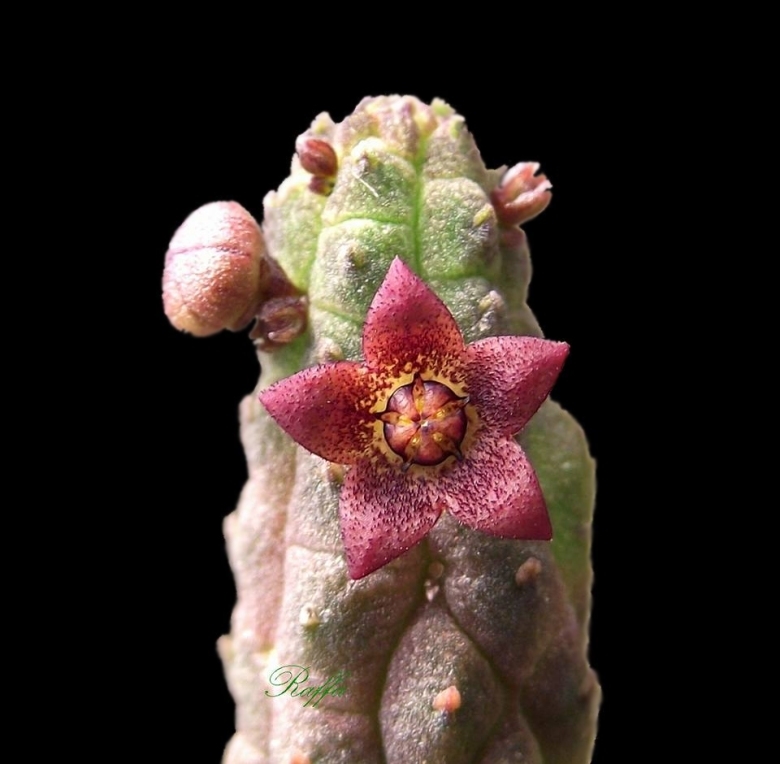
Echidnopsis nubica Photo by: Raffa C. Garcia
Origin and Habitat: South-Eeast Sudan and Ethiopia.
Habitat and ecology: Echidnopsis nubicaSN|19001]]SN|19001]] grows mainly in low, hot and dry areas. Common associates are Acacia etbaica, Aloe abyssinicaSN|653]]SN|653]], Capparis tomentosa, Caralluma pencillata, and Cucumis prophetarum.
Synonyms:
See all synonyms of Echidnopsis cereiformis
Common Names include:
ENGLISH: Еxиднопсис нубийский
CHINESE (中文): 青龍角, 青龙角
Description: Echidnopsis nubicaSN|18992]]SN|19001]] is a small succulents with erect or decumbent, branching stems forming mats or clusters and small brownish flowers. Stems and inflorescence as in Echidnopsis cereiformisSN|19001]]SN|18992]], and several authors feel that there is little justification for separating the two.
Flowers: Brownish. Sepals 1-1.5 mm long, lanceolate, acute, minutely papillate on the back. Corolla rotate or rotate-campanulate, 3-4 mm in diameter, 5-lobed to rather more than half-way down; lobes 1-1.5 mm long, ovate, acute, glabrous, smooth within, minutely papillate on the outside. Outer corona none; inner coronal-lobes deltoid-ovate, about 0.5 mm long, incumbent on the backs of the anthers and about equalling them in length.
Fruits (follicles): Up to 10 cm long and 8 mm thick, purplish with darker markings.
Bibliography: Major references and further lectures
1) N. E. Brown. “Flora of Tropical Africa” Vol 4, Part 1, page 231, 1904
2) “Echidnopsis Hooker fil.” <http://www.asclepiad-exhibition.org> Web. 25 Jan. 2015.
3) Focke Albers, Ulrich Meve “Illustrated Handbook of Succulent Plants: Asclepiadaceae: Asclepiadaceae” Volume 4 Springer Science & Business Media, 2002
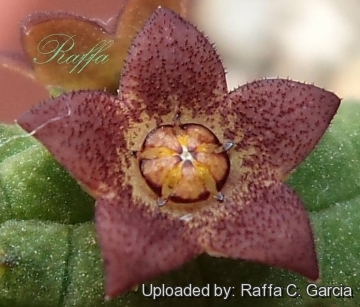 Echidnopsis nubica Photo by: Raffa C. Garcia
Echidnopsis nubica Photo by: Raffa C. Garcia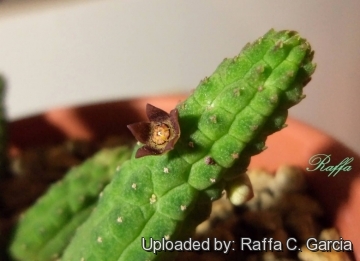 Echidnopsis nubica Photo by: Raffa C. Garcia
Echidnopsis nubica Photo by: Raffa C. Garcia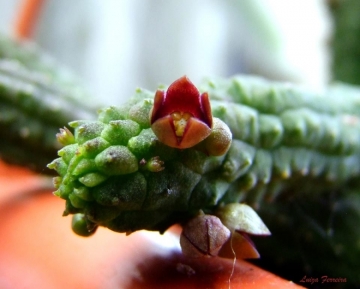 Echidnopsis nubica Photo by: Luiza Ferreira
Echidnopsis nubica Photo by: Luiza Ferreira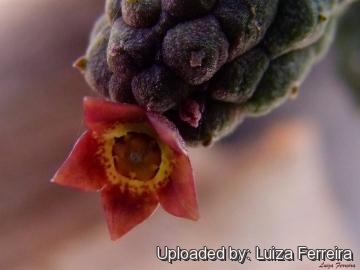 Echidnopsis nubica Photo by: Luiza Ferreira
Echidnopsis nubica Photo by: Luiza FerreiraCultivation and Propagation: Echidnopsis nubicaSN|19001]]SN|19001]] is an easy obliging blooming plant, which is happy in any average succulent house.
Soil: Since roots are quite shallow, use a cactus mix or add extra perlite or pumice to regular soil potting soil. A gritty, very free-draining compost is suitable, and clay pots help the plants to dry out between watering.
Watering: They require moderately watering through the growing season but enjoy plenty of water and some fertiliser in hot weather, this helps them to flower freely. Water more sparingly in winter according to temperatures. But, as with most asclepiads, it is unwise to leave them wet in cold weather.
Hardiness: Winter care presents no problems at 10°C with plenty of light.
Sun Exposure: Partial sun or light shade.
Pest and diseases: They are generally fairly easy to grow, especially if kept pest-free. They are susceptible to stem and root mealy bugs, and damage from these may well initiate fungal attack. If you do have problems with a stem or with basal rotting, you can reliably isolate the healthy parts, dry them off, and re-root them in moist compost.
Cultural Practices: Re-pot every 2 years.
Propagation: Easiest with stem cuttings. Allow cuttings to dry a day before planting. Stems must be laid (Not buried) on gritty compost and will then root from the underside of the stems. It can also be increased from seeds sowing in spring in moist, sandy peat moss. Barely cover seeds.















